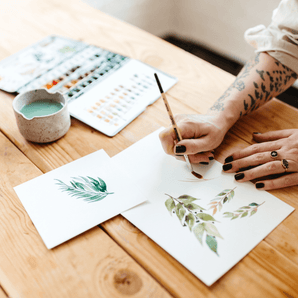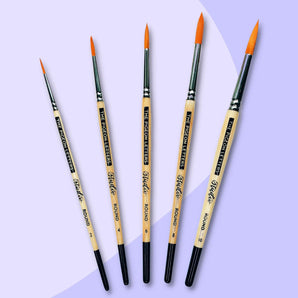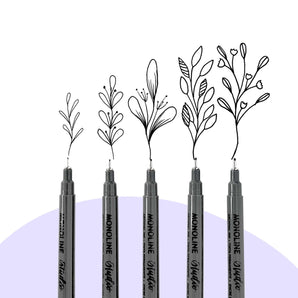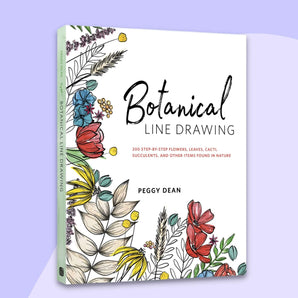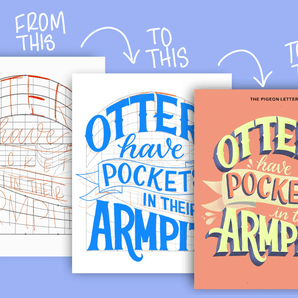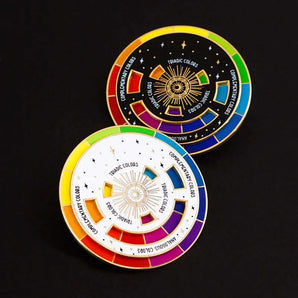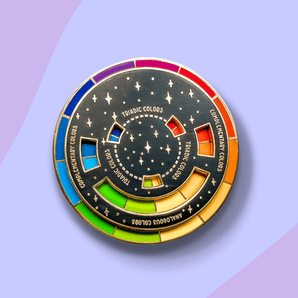Drawing folk art is a fun and creative way to dive into the world of vibrant colors and playful patterns, because folk art is all about adding your personal touch. That also means that you don’t worry about making everything perfect—it's the imperfections that give your work character!
Today, I’m walking you through simple steps to draw a cutie-pie peacock, adorned in ornamental folk art flair. We’ll start with the basic shapes and before you know it, reach the final details.
Whether you’re new to drawing or just looking to try something different, this tutorial will help you create a peacock that’s full of personality and charm. Let’s get started!
Step 1: Begin drawing with basic shapes
To kick off your folk art peacock, start by laying down the foundational shapes. Begin drawing with an oval for the body—this will serve as the core of your peacock's form. Next, add an oval or a circle for the head, positioning it above the body toward the side in a way that feels natural to you.
Think of these shapes as the skeleton of your drawing; they’re the basic forms that will guide you as you start to draw out your peacock. By keeping things simple at this stage, you’re setting yourself up for a smooth transition into more detailed work.
Step 2: Draw details using basic lines and curves
Now that you have the basic shapes in place, it’s time to start adding some details. You can do this with simple shapes as well, such as a triangle for the beak, which will give your peacock its distinctive profile.
Then, sketch straight lines for the legs, keeping them simple and clean. These basic lines and curves are essential—they help define the key features of your peacock without overwhelming the drawing.
As you add these details, remember that folk art thrives on simplicity and stylization, so there’s no need to stress about making everything perfect. Just focus on capturing the essence of the peacock with clean, confident lines.

Step 3: Apply a high-contrast, limited color palette
Now it’s time to bring your peacock to life with color. One of the hallmarks of folk art is its use of a bold, limited color palette, so select a few colors that will make your design stand out.
Opt for vivid hues or contrasting shades that create a striking visual impact, like pairing a bright blue with a deep red or a rich red with a vibrant yellow. The key here is to choose colors that complement each other while adding energy and depth to your illustration.
By keeping your palette limited, you’ll maintain the cohesive, stylized look that defines folk art, ensuring your peacock is both eye-catching and true to the art form.

Step 4: Incorporate folk art patterns and elements
I’ve selected specific areas to highlight with patterns to enhance the peacock’s features without overwhelming the overall design. The key is to focus on a primary area—in this case, the wing—where you can add intricate details while keeping the rest of the illustration simple.
- Add depth with color and patterns I introduced another color to the wing, which not only adds visual interest but also breaks the wing into distinct sections, giving it depth despite the flat color style.
- Choose the right patterns I opted for teardrop shapes with circles inside, accented by a small c-curve to give the wing subtle definition. This adds a decorative touch while maintaining clarity
- Enhance with additional elements: Within the new sections of the wing, I incorporated folk art motifs such as leaves, curling lines, and dots. These elements enrich the design without drawing attention away from the main feature.

To ensure the wing remains the focal point, I kept the details in other areas minimal:
- dots along the neck
- scalloped lines at the top of the body
These simple marks add interest and texture without competing with the wing. This step-by-step approach balances detail with simplicity.

If you need some folk art inspiration, you can download my ✨ free quick start to folk art guide ✨ full of step-by-step drawings and pattern ideas!





